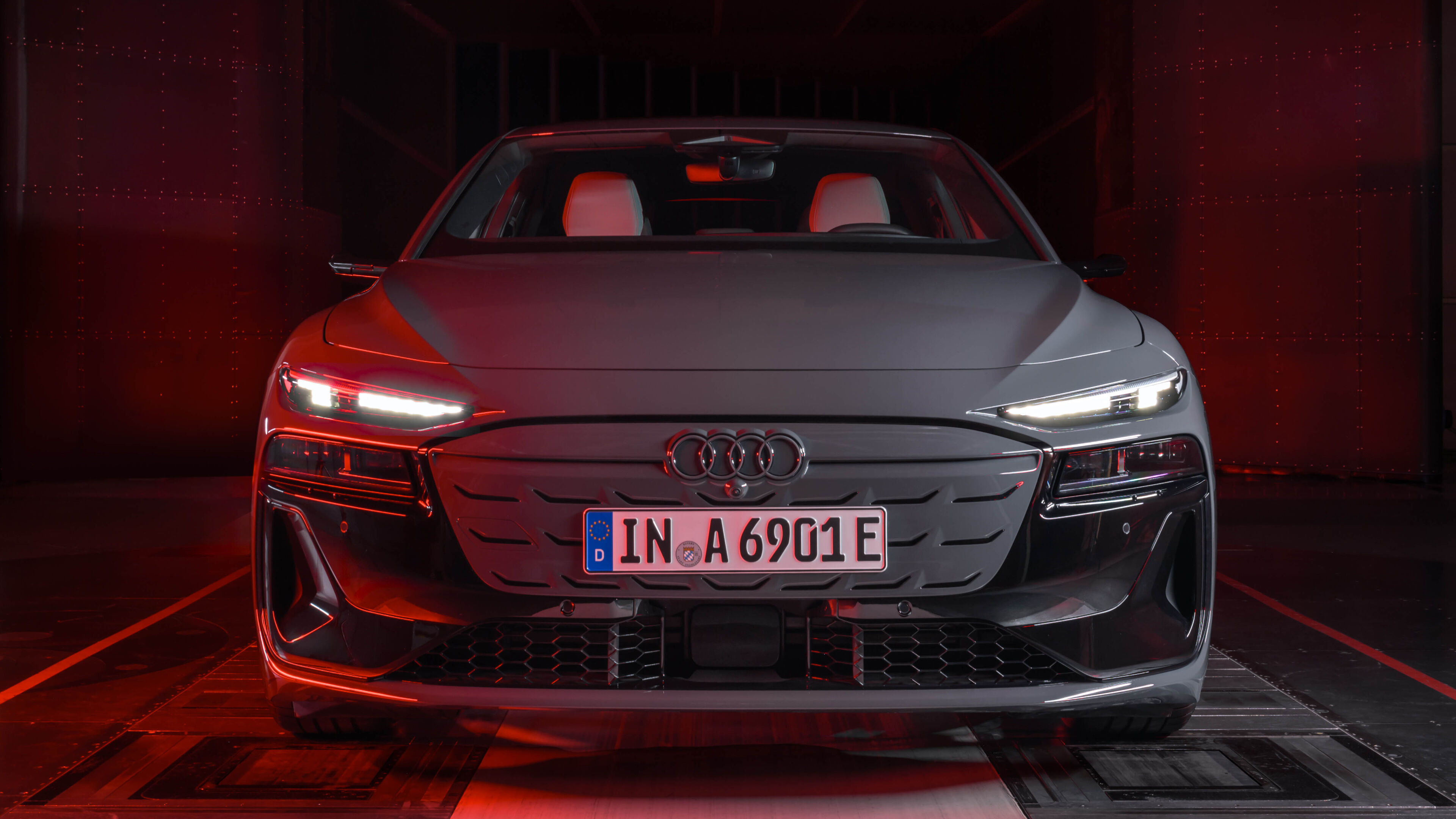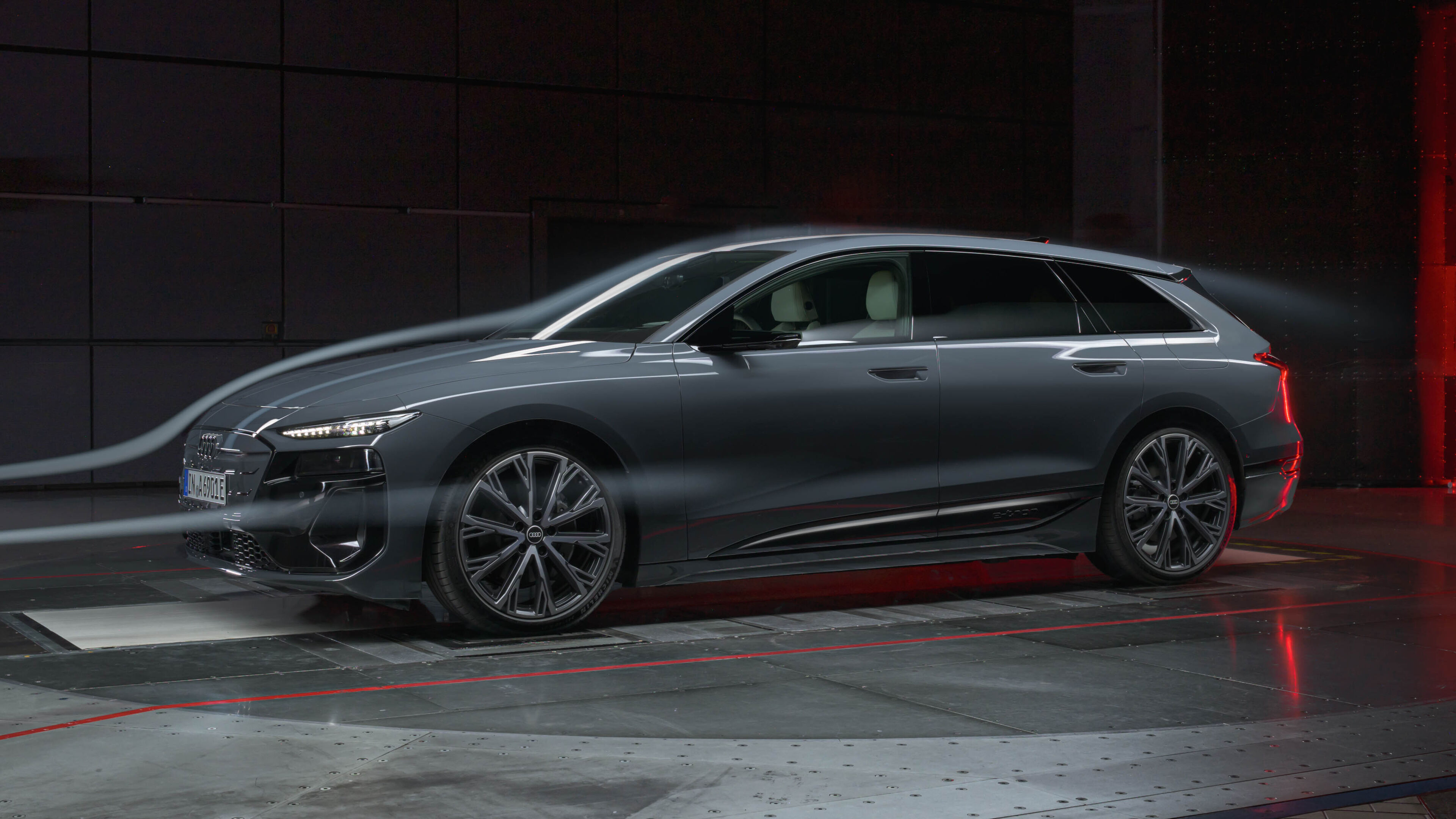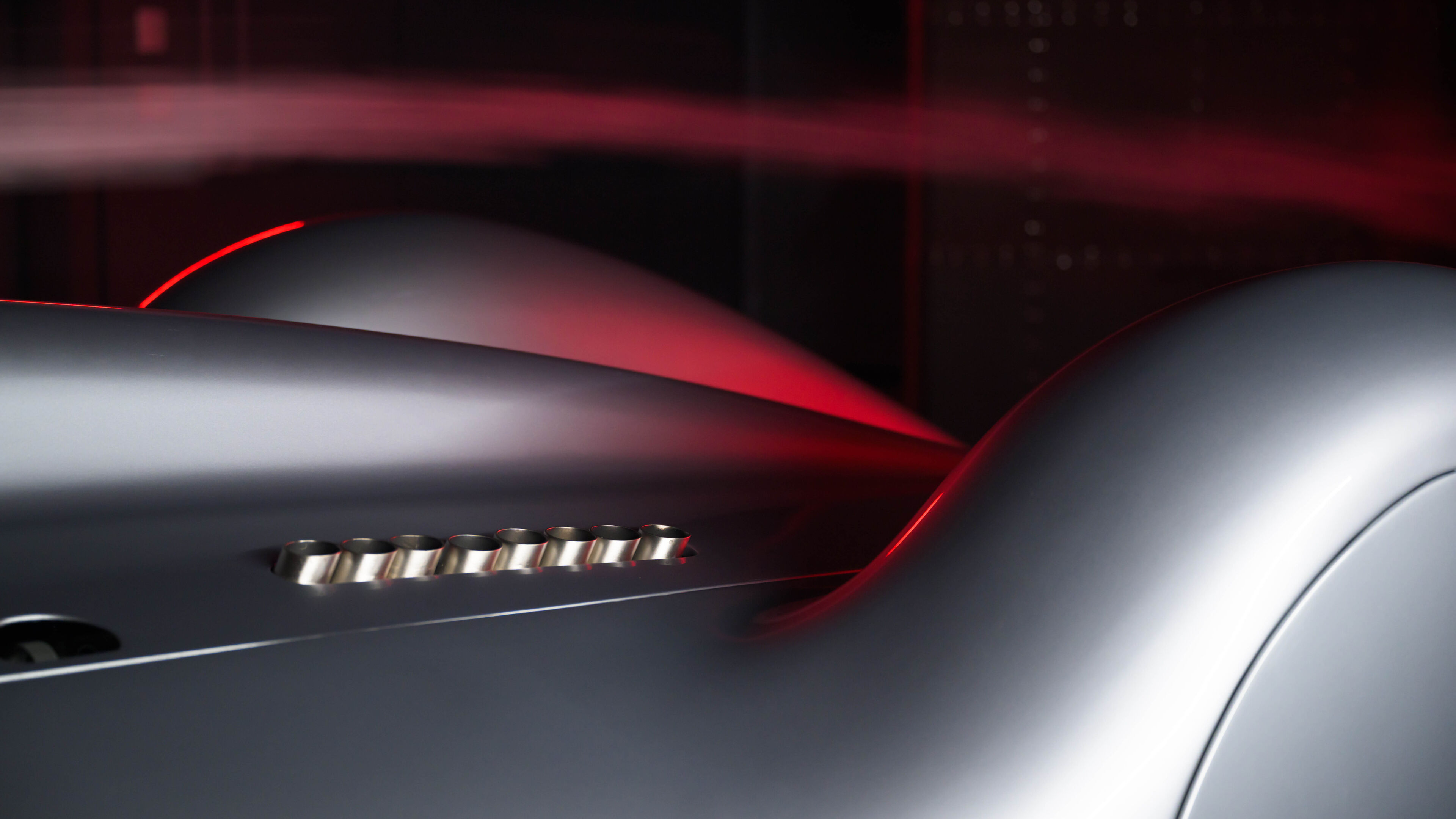
Exploring the Audi A6 e-tron's aero... with the help of a 248mph streamliner
The most aerodynamic car Audi has ever made... is a great big executive barge. And when the smoke clears, you’ll see it’s been a long time coming
On paper, we want our cars to be as aerodynamic as possible. We want to move about quickly, using no money-sapping energy. We don’t want to be disturbed by wind noise either. So why don’t conspicuously slippery cars tend to sell?
Ask Hyundai how the swoopy Ioniq 6 is doing versus the blocky Ioniq 5. Mercedes has already admitted fixing wheels to a herd of elephant seals has not lured its traditional customers into the EQ family, so the next set of electric Benzes will go back to having a bonnet, a roofline and a boot instead of the body composition of a garden slug.
There are exceptions, but for every Toyota Prius or Citroen DS success story, there’s a Honda Insight, a Chrysler Airflow, an Audi A2. The trick to designing a car the air doesn’t notice passing by is that we don’t notice that’s what it’s up to.
I’m paraphrasing what Dr Moni Islam, Audi’s chief of aerodynamics, has been explaining from inside his open plan office: the company Windkanal [wind tunnel] in Ingolstadt. Opened in 1999, it’s been in operation for a quarter of a century – 15 hours a day, five days a week.
Photography: Olgun Kordal
“If you look in a university textbook, you’ll see very quickly how to make a car that has a drag coefficient of 0.16 or something,” says Moni. “A teardrop, basically – that’s very easy. But a car that fulfils all kinds of different customer requirements – space, safety, cooling, packaging – that’s the challenge.”
Which brings us neatly to the car being tickled by a smoke trace in front of us: the new A6 e-tron. It looks like an Audi. Even if you prised the badged off, you’d recognise the squared off grille motif and stout shoulders. It’s a spacious estate, not a nondescript lozenge. And yet it’s the most aerodynamic Audi ever made.
OK, technically the Avant isn’t. The wagon here boasts a drag factor of 0.24. Its saloon twin (which isn’t a saloon any more at all, but a hatchback because that allows a longer sloping tail) is the slipperiest car in its class with a drag factor of 0.21. But I thought you’d prefer a closer look at the Avant because while there are officially umpteen electric saloon cars on the market, big premium badged e-wagons are few and far between. Above the likes of the Astra estate and MG5 no Audi buyer would be seen dead in, there’s the largely excellent BMW i5 Touring, and Porsche Taycan Sport Turismo: great to drive but pokey inside.
Like 0-62 times, Nürburgring laps or any of the measuring contests German carmakers indulge in, there are some asterisks. Dr Islam admits Chinese interlopers claim to be even slipperier, but they can’t yet be independently verified. Incidentally the most aero efficient car in the world right now is the superb Lucid Air (0.197Cd). Not on sale in Europe quite yet and – luckily for the A6 – a class above in size and price. Also not available as an estate.
Less drag obviously equals more range. Audi claims over 466 miles for the Sportback and 447+ for the Avant, and there’s evidence all over the A6 where mileage has been wrung out. Only a sliver of the car’s face is open for cooling, and even that is shuttered, unclenching when the ECU demands fresh air. Those vertical intakes bookending the bumper tidy airflow up before it sets off past the whirling, turbulent wheels.
Dr Islam tactfully points out these intricate S-line rims are a form over function design, but there will be flatter aero faced alternatives. I ask why cars these days don’t go the whole hog and fit 1980s Le Mans spec wheel covers. “Because besides maintenance we’d have to make the track narrower. That would compromise the suspension and interior space and possibly even the packaging of the motor.”
The good doctor explains his team cooks up a menu of subtle drag saving ideas, then argues each one’s benefit to the bean counters. Ideas that made it past them for the A6 include ramps ahead of the front wheels on the flat, sealed underbody, which deflect air around the tyres. The Avant’s humps are wider than the saloon’s, to balance the different diffusers – the wagon’s diffuser is stalled by a short ‘fence’, which means underbody airflow meets the over-roof flow in a less turbulent marriage, reducing low pressure, range sapping ‘suction’ in the void behind the tailgate.
Top Gear
Newsletter
Thank you for subscribing to our newsletter. Look out for your regular round-up of news, reviews and offers in your inbox.
Get all the latest news, reviews and exclusives, direct to your inbox.
An idea the accountants probably love for trousering a few quid is ‘virtual door mirrors’, aka cameras sprouting from the bottom of the A-pillar. I’ve never been a fan – not of Audi’s, nor anyone’s. Cameras don’t offer as wide a field of view as a mirror and are hopeless when it’s dark, wet or both. Britain for most of the year, in other words. Dr Islam concedes that ergonomically, “they take some getting used to”, but insists that if you tick the box, tests in this very wind tunnel prove you’ll gain 4.3 miles of range. Whether or not that’s worth a four figure options spend – and the usability bugbears – is up to you.
Audi’s no stranger to binning mirrors in the pursuit of slipperiness. Wheeled into the wind tunnel to face the smokescreen is the endearingly dowdy 100 saloon which, in 1982, was the most aerodynamic production car in the world.
Thanks to tucking the wiper mounts under a ramped bonnet hood, flush sealed windows and months of R&D experimenting with glasshouse angles and bootlid heights, this sit up and beg repmobile managed a Cd of 0.30. Well, not this one. This one’s too posh for that. It has alloys and two smoothed off mirrors. The base model, which Audi took a reading from, only had a driver’s side mirror and flat-faced wheel trims.
The 100 came along at a time when Audi was a minnow, dwarfed by the might of BMW and Mercedes. Quattro was a helpful USP, but agonising over drag spoke to the Vorsprung durch Technik ambition of this expansive upstart. Look at the BMW 5 Series that was on sale before the 100 rocked up, and the one that followed it. Chamfered. Neater. The attention to aero is stark.
If you don’t want an electric car yet (and judging by the current sales jitters you’re not alone) Audi will still sell a combustion powered executive saloon/liftback and estate alongside the A6 e-tron. It’s going to be called... the A7. Hold tight: from now on all even numbered Audis are e-tron EVs, and all odd numbers (like the new A5) are petrol, diesel or hybrid. Simple. Apart from the Q8, for some reason. That’s both. Two different cars on different platforms with the same name. Right.
What’s fascinating about the wider strategy is how the German big three, who for so long competed head on with each other with frightfully similar products, have wildly different tactics for the indecision clouding the industry.
Audi is basically duplicating its whole range, but keeping household names. Mercedes is mixing bespoke EV platforms with adapted (compromised) ones, wearing unfamiliar badges. And BMW reckons it’s best to build one omnicar, then offer it with every flavour of powertrain. Which is why you can buy the new 5 or 7 Series as a full EV, or a combustion car, or a plug-in hybrid. In a decade, we’ll find out who got it right.
The A6 e-tron rests on a platform codeveloped with Porsche, who insisted upon an 800V electrical architecture. So it’ll charge the 100kWh battery underbelly at up to 270kW (if only such speedy stations were commonplace), adding almost 200 miles of charge in 10 minutes. The motors are said to be smaller, lighter and more powerful than previous generation e-trons: the rear drive (yes, really) A6 offers up 362bhp, while the all-wheel-drive S6 takes that up to 496bhp, shaving the 0–62mph time from 5.4 to 3.9 seconds.
You don’t need a faster family estate. But you’ll get one when the RS6 e-tron arrives, alongside a rumoured plug-in hybrid V6 in the new RS7 Avant. You won’t find a more dizzying array of choice this side of the Netflix home screen.
Speaking of screens, the new A6 has five. Count ’em. The mirror cameras have been hoiked up onto the door cards, supposedly more in your eyeline, creating a thickset blind spot in the process. Then there’s the 11.9in instrument display for the driver, the 14.5in main display to share, and a 10.9in screen just for the passenger. They’re reactive, sharp and YouTube streams seamlessly. But if you want buttons... try an Audi 100. So chunky!
The 100 came along when Audi was a minnow, dwarfed by BMW and Mercedes
From inside, you’d never know this is an ‘aero car’. It’s spacious front and rear, with a humongous boot and mostly decent visibility. So it passes the test of being as slippery as possible without letting on. And what Dr Islam mentioned about trying to get as close as possible to the optimum teardrop while satisfying the needs of the outside lane dwelling captain of industry stuck in my head, because of what joined us last in the Windkanal.
In 1937, Audi’s ancestor Auto Union was locked in battle against Mercedes to build the world’s fastest Grand Prix car. Auto Union’s effort was the monstrous Type C, a silver torpedo with a brave driver in the nose and a 550bhp 6.0-litre supercharged V16 behind him. Infamously arse heavy and vindictively oversteery, Auto Union needed to adapt it for the race on the Automobil-Verkehrs und Übungsstraße, or AVUS circuit, south of Berlin.
AVUS wasn’t a racetrack. It was two six-mile stretches of dead straight autobahn with banked turns at each end. In search of top speed, the Type C had an impossibly beautiful aluminium speed suit shrink wrapped over the open wheels and upright nose, creating the Type C Stromlinie.
Mercedes won. Its Nazi subsidised 650bhp engines were too much for the Auto Unions, despite the Type C reaching 248mph during the race. When star driver Bernd Rosemeyer was killed during autobahn speed trials the following year, AVUS was deemed too dangerous for racing. Almost all of the Auto Union racing cars were lost during the WW2 years. This one was commissioned by Audi in 2000 and is an exact, fully functional replica.
And do you know what’s incredible? Despite being built purely in pursuit of speed, and looking as svelte and sleek as it’s possible for a wheeled vehicle to be... when today’s scientists popped it in the wind tunnel, its drag coefficient was 0.246. To the air around you, it’s more of a disturbance than the new A6 estate.











